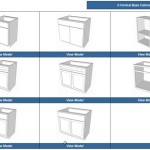How Do You Clean White Kitchen Cabinets Without Removing the Finish
Maintaining the pristine appearance of white kitchen cabinets requires regular cleaning and care. White surfaces, while aesthetically pleasing, are particularly susceptible to showing dirt, grime, grease splatters, and fingerprints. The challenge lies in effectively removing these blemishes without damaging the cabinet's finish. Various cleaning methods and products exist, and understanding their suitability is crucial to preserving the longevity and beauty of your white kitchen cabinets.
This article outlines methods for cleaning white kitchen cabinets without removing the finish, focusing on safe and effective techniques, appropriate cleaning solutions, and preventative measures to minimize the need for aggressive cleaning. Proper cleaning not only enhances the kitchen's overall appearance but also protects the cabinets from long-term damage caused by accumulated dirt and grease.
Understanding Cabinet Finishes
Before embarking on any cleaning endeavor, it is essential to understand the type of finish applied to the kitchen cabinets. Common finishes include paint (latex, oil-based, acrylic), laminate, and thermofoil. Each finish possesses unique characteristics that influence its reactivity to cleaning agents. Identifying the finish is crucial to selecting the appropriate cleaning method and avoiding damage such as discoloration, peeling, or dulling of the surface.
Painted cabinets require a gentle approach, particularly those with a matte or satin finish, which are more susceptible to abrasion. Laminate cabinets, known for their durability, can typically withstand stronger cleaning solutions. Thermofoil cabinets, constructed with a vinyl layer adhered to a substrate, are sensitive to heat and harsh chemicals, necessitating careful cleaning practices. Consulting the manufacturer's documentation or contacting the cabinet manufacturer can provide valuable insights into the specific finish and recommended cleaning practices.
Neglecting to identify the cabinet finish can lead to irreversible damage. Using abrasive cleaners on a painted surface, for instance, can scratch the finish, while applying harsh solvents to thermofoil cabinets can cause the vinyl layer to delaminate. Therefore, taking the time to understand the finish is a crucial preliminary step in the cleaning process.
Safe and Effective Cleaning Methods
Several methods are advocated for cleaning white kitchen cabinets without compromising the finish. These methods prioritize gentle cleaning action and the use of non-abrasive cleaning solutions. The most common approach involves a combination of warm water, mild dish soap, and a soft cloth or sponge. This simple solution is effective for removing everyday dirt, dust, and minor spills.
To prepare the cleaning solution, mix a small amount of mild dish soap (approximately one teaspoon) into a bucket of warm water. Avoid using excessive soap, as it can leave a residue on the cabinet surface. Dampen a soft cloth or sponge with the solution, ensuring it is not overly saturated. Gently wipe down the cabinet surfaces, paying particular attention to areas with visible dirt or grime. Rinse the cloth or sponge frequently in clean water to prevent spreading the dirt around.
After wiping the cabinets with the soapy solution, rinse them with a clean, damp cloth to remove any soap residue. Finally, dry the cabinets thoroughly with a clean, dry cloth to prevent water spots and streaking. This simple yet effective method is suitable for routine cleaning and can be performed regularly to maintain the cleanliness of the cabinets.
For more stubborn stains or grease buildup, a paste made from baking soda and water can be used. Baking soda is a mild abrasive that helps to loosen and lift dirt without scratching the cabinet finish. Mix a small amount of baking soda with enough water to form a thick paste. Apply the paste to the affected area and gently rub it in a circular motion using a soft cloth or sponge. Rinse the area thoroughly with clean water and dry it with a clean cloth.
Another helpful cleaning agent that is safe for most white kitchen cabinet finishes is white vinegar. Vinegar's acidity helps cut through grease and grime. Create a solution of equal parts white vinegar and water. Apply the solution to the cabinets with a spray bottle or use a cloth dampened with the solution. Wipe the cabinets clean, then rinse with a clean, damp cloth and dry thoroughly.
It is always advisable to test any cleaning solution in an inconspicuous area of the cabinet before applying it to the entire surface. This precautionary step helps to ensure that the solution does not damage or discolor the finish. If any adverse reaction is observed, discontinue use and seek alternative cleaning methods.
Choosing the Right Cleaning Products
Selecting appropriate cleaning products is paramount to preserving the integrity of white kitchen cabinets. Avoid using abrasive cleaners, scouring pads, steel wool, or harsh chemicals such as bleach, ammonia, or strong solvents. These products can scratch, dull, or discolor the cabinet finish, leading to irreversible damage.
Opt for mild, pH-neutral cleaning solutions specifically designed for kitchen cabinets or general household cleaning. Ensure the product is non-abrasive and suitable for the type of finish on your cabinets. Read the product label carefully and follow the manufacturer's instructions for application and rinsing. If in doubt, test the product in an inconspicuous area before applying it to the entire surface.
Microfiber cloths are an excellent choice for cleaning white kitchen cabinets. These cloths are soft, absorbent, and non-abrasive, effectively removing dirt and grime without scratching the finish. They can be used dry for dusting or dampened with a cleaning solution for more thorough cleaning. Avoid using paper towels, as they can leave lint behind and may be slightly abrasive.
When dealing with stubborn stains or grease buildup, consider using specialized kitchen cabinet cleaners designed to tackle these issues. These cleaners typically contain mild solvents or degreasers that help to loosen and lift dirt without damaging the finish. However, it is crucial to choose a product that is specifically formulated for the type of finish on your cabinets and to follow the manufacturer's instructions carefully.
Natural cleaning solutions such as baking soda, vinegar, and lemon juice can also be effective alternatives to commercial cleaning products. These solutions are generally safe for most cabinet finishes and offer a more environmentally friendly approach to cleaning. However, it is essential to use them in moderation and to test them in an inconspicuous area before applying them to the entire surface.
Preventative Measures to Minimize Cleaning
Proactive measures can significantly reduce the frequency and intensity of cleaning required to maintain white kitchen cabinets. Regular dusting and spot cleaning can prevent dirt and grime from accumulating, making it easier to keep the cabinets clean.
Wipe down the cabinets regularly with a dry microfiber cloth to remove dust and surface dirt. This simple task can be performed weekly or even daily to prevent buildup. Immediately wipe up any spills or splatters to prevent them from drying and becoming stains. Use a damp cloth to clean up spills and then dry the area thoroughly.
Install a backsplash behind the stovetop and sink to protect the cabinets from grease splatters and water damage. A backsplash provides a barrier that is easier to clean than the cabinet surface itself. Consider using a range hood or exhaust fan while cooking to vent steam, grease, and odors away from the cabinets. This helps to prevent grease and grime from accumulating on the cabinet surfaces.
Avoid placing small appliances directly against the cabinets. The heat and steam generated by these appliances can damage the finish over time. Use placemats or coasters to protect the cabinet surfaces from scratches, stains, and heat damage. Keep the kitchen well-ventilated to prevent moisture buildup, which can lead to mold and mildew growth. Open windows or use a dehumidifier to maintain a dry environment.
Educate household members about the importance of keeping the kitchen cabinets clean and free from spills and splatters. Encourage them to wipe up any messes immediately and to avoid touching the cabinets with dirty hands. By implementing these preventative measures, you can significantly reduce the need for aggressive cleaning and prolong the life of your white kitchen cabinets.

How To Clean Painted Cabinets Without Ruining Your Finish Grace In My Space

How Do You Clean Kitchen Cabinets Without Removing The Finish Authentic Custom Cabinetry

How To Clean White Kitchen Cabinets 3 Best Ways Avoid Abbotts At Home

How To Clean White Kitchen Cabinets Cabinetselect Com

How To Clean White Kitchen Cabinets 3 Best Ways Avoid Abbotts At Home

How To Clean White Kitchen Cabinets Cabinetselect Com

3 Super Easy Ways To Clean White Kitchen Cabinets And Avoid

How To Clean White Kitchen Cabinets Cabinetselect Com

What S The Best Way To Clean Your White Kitchen Cabinets Ag Williams

The Complete Guide To Keeping White Cabinets Clean Cabinet Now








